Abel Prize facts for kids
Quick facts for kids Abel Prize |
|
|---|---|
 |
|
| Presented by | Government of Norway |
| Country | Norway |
| First awarded | 2003 |
The Abel Prize is a very important award given every year to one or more amazing mathematicians. The King of Norway presents this prize. It's named after a famous Norwegian mathematician called Niels Henrik Abel (who lived from 1802 to 1829). Many people call it the "Nobel Prize of Math" because it's set up in a similar way to the Nobel Prizes.
The winner of the Abel Prize receives a large sum of money, which is 7.5 million Norwegian kroner (NOK). This amount was increased in 2019 from 6 million NOK.
The idea for the Abel Prize started way back in 1899. A Norwegian mathematician named Sophus Lie suggested it. He found out that Alfred Nobel's plans for his famous prizes didn't include one for mathematics. In 1902, King Oscar II of Sweden and Norway was willing to pay for a math prize. However, the prize couldn't be created then because Norway and Sweden separated in 1905.
It took almost 100 years for the prize to finally be created! The Government of Norway officially started the Abel Prize in 2001. Their goal was to give mathematicians their own award, just like the Nobel Prize. A special group called the Abel Committee chooses the winners. The Norwegian Academy of Science and Letters picks the members of this committee.
The award ceremony happens at the University of Oslo in a special hall called the aula. This is the same place where the Nobel Peace Prize used to be given out from 1947 to 1989. There is also an Abel symposium, which is a meeting for mathematicians, held twice a year.
Contents
The Story of the Abel Prize
The idea for the Abel Prize first came up in 1899. This was to celebrate 100 years since Niels Henrik Abel was born in 1802. As mentioned, the mathematician Sophus Lie suggested it because there was no math prize among the Nobel Prizes.
King Oscar II wanted to fund a math prize in 1902. Two mathematicians, Ludwig Sylow and Carl Størmer, even wrote down the rules for it. But after Sophus Lie passed away, and when Norway and Sweden separated in 1905, the first attempt to create the prize ended.
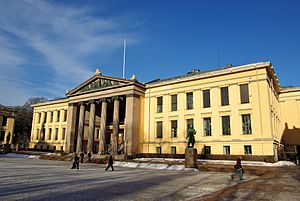
Interest in the prize grew again in 2001. A group worked on a plan and showed it to the Prime Minister of Norway. In August 2001, the Norwegian government announced that the prize would start in 2002. This was exactly 200 years after Abel's birth. The first official Abel Prize was given out in 2003.
Since 2010, a series of books has been published. These books feature the Abel Prize winners and their amazing math research. In 2019, Karen Uhlenbeck made history by becoming the first woman to win the Abel Prize. She was recognized for her important work in analysis, geometry, and mathematical physics.
There's also another award called the Bernt Michael Holmboe Memorial Prize, started in 2005. It's named after Abel's teacher and celebrates excellent math teaching.
How Winners Are Chosen and Funded
Anyone can suggest someone for the Abel Prize, but you can't nominate yourself. The person you nominate must be alive. If a winner passes away after being chosen, they still receive the prize.
The Norwegian Academy of Science and Letters announces the winner of the Abel Prize every March. They make this decision based on advice from the Abel Committee. This committee is made up of five top mathematicians from around the world. The Norwegian Academy of Science and Letters chooses these committee members. They are also suggested by the International Mathematical Union and the European Mathematical Society.
Funding for the Prize
In 2001, the Norwegian Government provided the prize with an initial fund of 200 million NOK (about €21.7 million). Today, the prize is paid for directly from Norway's national budget.
A special Board manages the funding. The Norwegian Academy of Science and Letters elects the members of this Board.
Past Winners
| Year | Winner(s) | Image | Institution(s) | Why they won |
|---|---|---|---|---|
| 2003 | Jean-Pierre Serre | 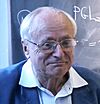 |
Collège de France | "For helping to shape many parts of modern mathematics, including topology, algebraic geometry and number theory." |
| 2004 | Michael Atiyah |  |
University of Edinburgh | "For discovering and proving the index theorem. This theorem connects topology, geometry and analysis, and helped build new links between mathematics and theoretical physics." |
| Isadore Singer |  |
Massachusetts Institute of Technology University of California, Berkeley |
||
| 2005 | Peter Lax |  |
Courant Institute (NYU) | "For his important work on the theory and use of partial differential equations and how to calculate their solutions." |
| 2006 | Lennart Carleson | 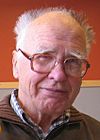 |
Royal Institute of Technology | "For his deep and influential work in harmonic analysis and the theory of smooth dynamical systems." |
| 2007 | S. R. Srinivasa Varadhan |  |
Courant Institute (NYU) | "For his basic contributions to probability theory. Especially for creating a unified theory of large deviation." |
| 2008 | John G. Thompson | 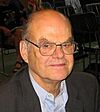 |
University of Florida | "For their important achievements in algebra. Especially for shaping modern group theory." |
| Jacques Tits | 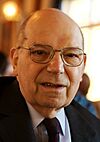 |
Collège de France | ||
| 2009 | Mikhail Gromov |  |
Institut des Hautes Études Scientifiques and Courant Institute (NYU) | "For his revolutionary contributions to geometry." |
| 2010 | John Tate |  |
University of Texas at Austin | "For his huge and lasting impact on the theory of numbers." |
| 2011 | John Milnor |  |
Stony Brook University | "For pioneering discoveries in topology, geometry, and algebra." |
| 2012 | Endre Szemerédi | 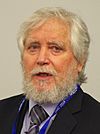 |
Alfréd Rényi Institute and Rutgers University | "For his basic contributions to discrete mathematics and theoretical computer science. Also for the deep and lasting impact of these contributions on additive number theory and ergodic theory." |
| 2013 | Pierre Deligne |  |
Institute for Advanced Study | "For important contributions to algebraic geometry. And for their huge impact on number theory, representation theory, and related areas." |
| 2014 | Yakov Sinai |  |
Princeton University and Landau Institute for Theoretical Physics | "For his basic contributions to dynamical systems, ergodic theory, and mathematical physics." |
| 2015 | John F. Nash Jr. | 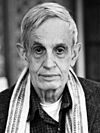 |
Princeton University | "For striking and important contributions to the theory of nonlinear partial differential equations and how they are used in geometric analysis." |
| Louis Nirenberg | 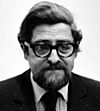 |
Courant Institute (NYU) | ||
| 2016 | Andrew Wiles |  |
University of Oxford | "For his amazing proof of Fermat's Last Theorem. This was done using the modularity conjecture for semistable elliptic curves, which started a new era in number theory." |
| 2017 | Yves Meyer |  |
École normale supérieure Paris-Saclay | "For his key role in developing the mathematical theory of wavelets." |
| 2018 | Robert Langlands |  |
Institute for Advanced Study | "For his visionary program that connects representation theory to number theory." |
| 2019 | Karen Uhlenbeck | 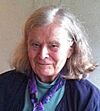 |
University of Texas at Austin | "For her pioneering achievements in geometric partial differential equations, gauge theory and integrable systems. Also for the basic impact of her work on analysis, geometry and mathematical physics." |
| 2020 | Hillel Furstenberg | 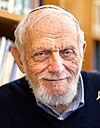 |
Hebrew University of Jerusalem | "For being the first to use methods from probability and dynamics in group theory, number theory and combinatorics." |
| Grigory Margulis | 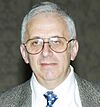 |
Yale University | ||
| 2021 | László Lovász |  |
Eötvös Loránd University | "For their foundational contributions to theoretical computer science and discrete mathematics. And for their leading role in shaping these into central fields of modern mathematics." |
| Avi Wigderson |  |
Institute for Advanced Study | ||
| 2022 | Dennis Sullivan | 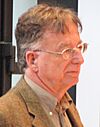 |
Stony Brook University and The Graduate Center, CUNY | "For his groundbreaking contributions to topology in its broadest sense. Especially its algebraic, geometric and dynamical aspects." |
| 2023 | Luis Caffarelli |  |
University of Texas at Austin | "For his important contributions to the theory of how smooth solutions are for nonlinear partial differential equations. This includes free-boundary problems and the Monge–Ampère equation." |
| 2024 | Michel Talagrand | 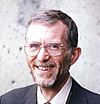 |
Centre national de la recherche scientifique | "For his groundbreaking contributions to probability theory and functional analysis. With outstanding applications in mathematical physics and statistics." |
See Also
 In Spanish: Premio Abel para niños
In Spanish: Premio Abel para niños
- Fields Medal
- List of prizes known as the Nobel or the highest honors of a field
- List of mathematics awards

